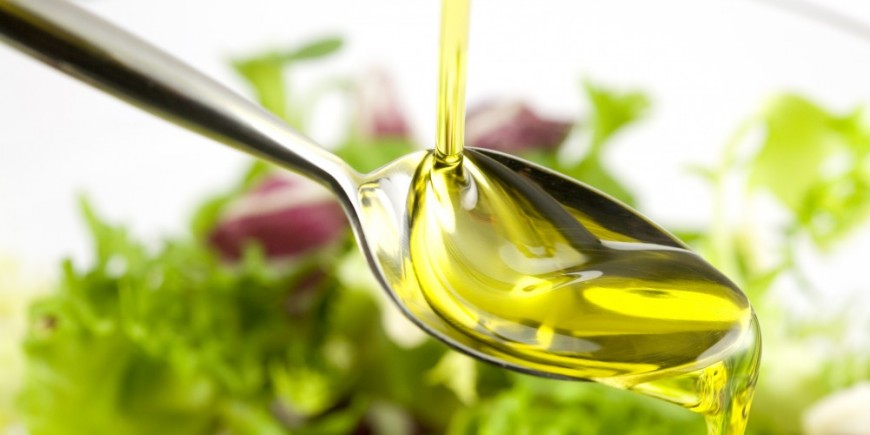
Fats
Major functions of fats: they are a concentrated source of energy for tissues and organs they are energy storage for…
Major functions of fats:
- they are a concentrated source of energy for tissues and organs
- they are energy storage for the body
- they are a building material for cell membranes and white matter of the brain
- they stabilize the position of organs
- inhibit stomach acid secretion
- prevent heat loss
- affect skin and hair condition
- affect the circulatory system condition
- edible fats are a source of vitamins A, D, E, K and make absorption of other products easier
- have an influence on the nervous system functioning
- they assist digestion of carbohydrates
There are a few types of fats division, but I will not present them here. We, as consumers, are interested mostly in their nutritional value. The same as with proteins whose nutritional value is decided by the amino acids they contain (number and types), in fats, their nutritional value is decided by fatty acids that can be found in them.
All fatty acids have an influence on cholesterol level in blood and this is a basic criterion to recognize fats as healthy or not healthy. Therefore, I will write a few lines about cholesterol, which is necessary for life, but which is exceptionally infamous.
Cholesterol
In the plasma or blood serum cholesterol binds proteins forming lipoproteins. Lipoproteins of low density are called LDL, and those of high density – HDL. LDL deals with transporting cholesterol to cells including epithelium cells. If the conditions are appropriate, it is accumulated in those vessels creating atherosclerotic plaque, which is the cause of coronary heart disease. That is why, LDL is called ‘bad cholesterol’ colloquially. Garlic is worth eating – of all products it is best at stopping atherosclerotic changes. HDL deals with transporting cholesterol from blood vessels to the liver. It is antiatherogenic and is called ‘good cholesterol’. Cholesterol is produced in our body, but we also need to provide our bodies with it. Unfortunately, if we supply too much of it, its concentration in blood rises.
The importance of fatty acids:
Saturated fatty acids considerably speed up concentration of atherosclerotic plaque in vessels. A lot of research clearly show that those acids are connected with cancer, especially breast cancer in women and colon or prostate cancer in men. Only those acids included in crustacean and chicken (without skin) do not cause the cholesterol level to rise.
Monounsaturated fatty acids can replace saturated ones in the diet. This is because they have all the positive functions of fats, but they do not speed up atherosclerosis and cancer.
Polyunsaturated fatty acids (Omega-3, Omega-6 and Omega-9), apart from the functions mentioned at the beginning of the post, play a lot of extremely important parts for our health, because they:
- control transportation of cholesterol
- strengthen capillaries
- control body mass and appropriate growth
- take care of our skin
- improve our immunity to infections
- regulate kidneys work
- assist proper heart functioning
- facilitate wound healing
- have a positive influence on the nervous system
However, in order to make Omega acids function properly, we need to take care of their appropriate proportions in meals. Especially the proportion of Omega-3 acids (N3) to Omega-6 (N6). The correct ratio is of those acids should be N3:N6 – 2:1. If we stick to the following rules of consuming fats, we will benefit from all their values and will not put our bodies at risk.
The rules of eating fats:
- fats can be combined with carbohydrate and vegetables
- the amount of fat in the diet should be limited
- fried fats are more harmful, therefore, it’s better to eat them without heating (however, if a dish is fried, use clarified butter to prepare it)
- solid fats should be minimized in the diet, because they contain saturated fats
- vegetable fats, which should be eaten more often, need to be eaten as oils from the first cold pressing
- the healthiest are: grape seed oil, linseed oil, evening primrose oil, borage oil – lowers cholesterol level in blood, coconut oils is also healthy
- fat from fish is protective for heart disease, so it should be always present in our diet, fresh fish is the healthiest
- eliminate margarine from your diet, because it contain harmful trans fats, moreover, margarine as well as mixtures of vegetable and animal fats are artificial, non-digestible by the body
How to make clarified butter:
Take out butter form the wrapping, put it in a pot, and pour warm boiled water over it. Cook on a low heat for one hour. Cool it down and put the pot in the fridge. When the butter is solid, pour off the remaining water.
In this way we can cleanse butter from all harmful additives that are added in the process of production.
I invite you to read the text entitled “Omega-3!” by Wojciech Zep:
Omega 3!
Inappropriate nutrition is one of the major risk to develop civilization diseases. The main cause of cardiovascular diseases or cancer are saturated fats. We acknowledge that a lot healthier for our bodies are unsaturated fatty acids, among which there are mono- and polyunsaturated fatty acids. In fact, mono- and polyunsaturated are healthier that saturated fats. Additionally, they are necessary for the body to function properly. It is a mistake to eliminate fat from the diet, we should pay more attention to the quality of fats we eat though. Not all fatty acids are healthy for us. The best in terms of quality are long-chain fatty acids from ω-3 group: eicosapentaenoic acid (EPA) and docosahexaenoic acid (DHA). α –linolenic acid (ALA) can be counted as part of that group, even though it is in the ω-3 group, it has a little different functions from those mentioned already. EPA and DHA acids are essential in proper metabolism, they are part of cell membranes in the nervous system, retina and testicles. What is more, they are precursors of hormone-like anti-inflammatory substances. ALA can transform to long-chain forms in the body, though their primary purpose is generating energy (95%). The most important function of ω-3, in my opinion, is its anti-inflammatory function in the blood. It may be particularly important for sportspeople, who are subject to hard workouts or have to take part in competitions every 3-5 days. The ratio of Omega-6 to Omega-3 acids is also important, so there should be an appropriately high amount of Omega-3 in the blood. Although Omega-6 acids are essential for the body to function properly, they also increase inflammation! In order to limit inflammation, it is worth including EPA and DHA acids in the diet! A negative effect of diets rich in polyunsaturated fatty acids, especially ω-6, is related to the increase of free radicals and other products with proven carcinogenic, mutagenic and atherogenic properties. The effect of it is the peroxidative-oxidative imbalance, that is oxidative stress. It is recommended to increase the share of energy coming from monounsaturated acids, decrease the share of energy from polyunsaturated acids and increase the share of ω-3 at the same time decreasing ω-6 (changing the ratio of ω-3 / ω-6). Not only sportspeople can benefit from ω-3, but also people with cardiovascular diseases, some types of cancer, rheumatoid arthritis, ulcerative colitis, asthma, psoriasis, and many other autoimmune disorders. Moreover, long-chain fatty acids lower the level of triglycerides and rise ‘good cholesterol’ in the blood. Low EPA and DHA levels cause insulin resistance of tissues, which may contribute to obesity. The main source of long-chain fatty acids in our diet is fat from saltwater fish. The content of DHA and EPA depends on a season and physiological condition of fish, for instance, fish from cold northern seas contain more EPA whereas fish from southern seas more DHA. Omega-3 fatty acids can be also found in algae, phytoplankton as well as in marine animals feeding on phytoplankton or other fish.
Dietary sources of Omega-3 fatty acids!
Product g / 100g
Salmon 2.5 g
Mackerel 2.8 g
Sardines 2.0 g
Trout 1.3 g
Tuna 1.1 g
Cod-liver oil 24 g
Linseed oil 57 g
Linseed 16 g
Rapeseed oil 9.6 g
Walnuts 7.5 g
Walnut oil 11.5 g
Shrimp 0.5 g
Peanuts 0.4 g
Oyster 0.5 g
Pumpkin seeds 8.5 g
The National Food and Nutrition Institute recommendations (2012):
Children:
EPA + DHA: AI 7-24 months: DHA exclusively = 100 mg/d
2-18 years: EPA+DHA = 250 mg/d
N6 DRV not determined
Adults:
N6 DRV not determined
EPA + DHA AI = 250 mg/d
Pregnant and breastfeeding women:
RI=250 mg EPA/d +100-200 mg DHA/d
Practice and tips:
- replace cod-liver oil with oil or capsules containing ω-3 (they differ in terms of the fatty acids content as well as vitamin A)
- introduce saltwater fish to your diet at least 3 times a week
- take ω-3 with your meal after exercise
- avoid products that contain a large amount of ω-6, such as: safflower oil, grape seed oil, sunflower oil, corn oil, wheat germ oil, walnut oil, mayonnaise, sweets!
- the best ratio of those fatty acids in the diet is 3:1.










Comments No Comments
Join the discussion…